 United States
United States
List for UN Allies
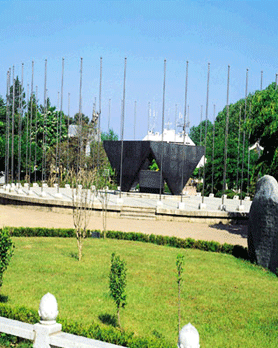
Monument for the Participation of the USA in the Korean War
The United States of America was the first country which participated in the Korean War. The USA not only dispatched the largest scale of armed forces, but also suffered the largest sacrifice. This monument was built to commemorate the participation of US forces in the Korean War, and to respect those who died during the war.
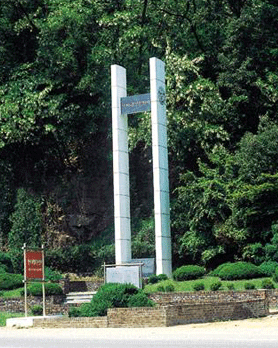
Monument for the Participation of the US and ROK Marines in the Korean War
In order to commemorate the achievements and the heroic deaths of the US and ROK marines during the Korean War, this monument was built on their battle field in Bongilchon-ri.
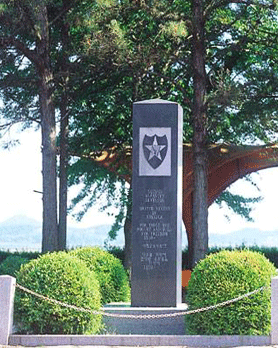
Monument for the Participation of the US 2nd Division in the Korean War
This Monument was built to commemorate the achievements and the heroic deaths of the US 2nd Infantry Division who fought for freedom during the Korea War (1950-1953).
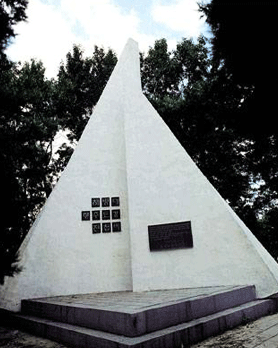
Monument for Marines Crossing the Han River in Haengju
This monument had originally been built on September 28, 1958, to commemorate the achievements by the US-ROK joint marine unit which contributed to recovering Seoul after successfully carrying out the operation of crossing the Han River. The ROK Marine Command rebuilt the monument on 20 September 1984, to refine its appearance.
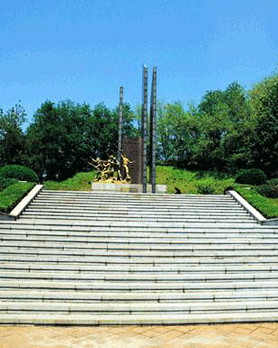
Monument to the first battle of UN forces in the Korean War
UN armed forces participated in the Korean War had their first battle with North Korean troops in Jukmiryong, Osan. In April 1982, the Ministry of National Defense constructed this monument to commemorate UN forces first combat, and to respect those who died in this place.
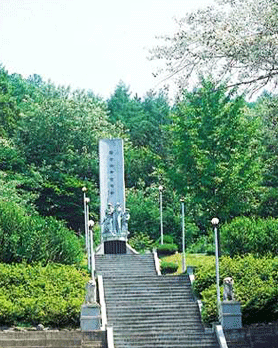
Monument for the Achievement in the Deajon Combat
On July 5, 1950, after the Osan battle, the US 24th Division was engaged in a defensive battle when North Korean forces had launched an enveloping attack on Daejon. In this combat, the 24th Division used for the first time 3.5 Rocket Guns, and destroyed enemy tanks. But the Division lost its commander, General Dean, in this fighting. This monument was built in December 1981 to respect US soldiers who died in the battle and to honor the friendly blood ties.
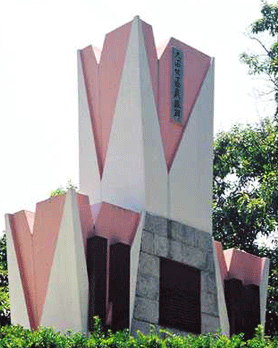
Monument for the Victory in the Daejon Combat
On July 5, 1950, the US 24th Division fought with the enemy in Osan, but was forced to retreat to Daejon. As the enemy had launched an enveloping attack on Daejon, the 24th Division carried out a desperate defense operation. This monument was built to commemorate the achievements of US soldiers who had defended peace and freedom.
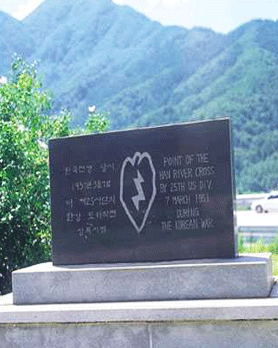
Monument for the US 25th Division s Crossing of the Han River
In order to recover Seoul which had been occupied by Chinese forces, the 25th Division first carried out the operation of crossing the Han River on March 7, 1951. The success served as a stepping-stone for regaining Seoul. This monument was built to commemorate the courage of US soldiers.
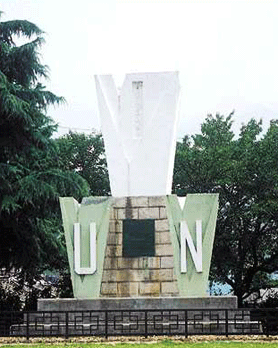
Monument for the Changnyoung Region Combat
The US 24th Infantry Division was engaged in a defensive battle in the early stages of the Korean War when the North Korean 4th Infantry Division had launched an attack to secure a foothold at the eastern part of the Naktong River, which is a bulge in the Changyoung area. The fierce battle raged for 13 days. They successfully defeated the enemy s attack. This monument was built to commemorate this victory.
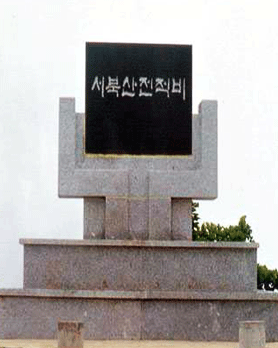
Monument for the Mt.Sobuk Combat
The combat on Mt. Sobuk was the first counterattack operation carried out in a large scale by UN forces, and played a critical role in securing the Naktong River defense line. This monument was built to respect Captain Timons, the Company commander, and the soldiers who died in this fighting.
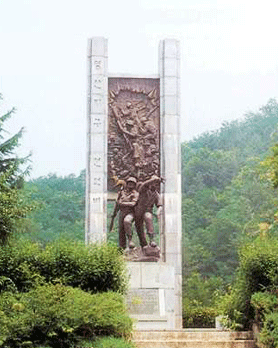
Monument for the Youngsan Region Combat
During the Korean War, North Korean forces launched the last stage offensive in the Youngsan region to attack Pusan. But its was deterred by desperate defense by US and ROK troops. In order to commemorate the achievement and respect the soldiers who died for freedom, this monument was built by the Ministry of Transportation, the Ministry of National Defense, and International Tourist Company.
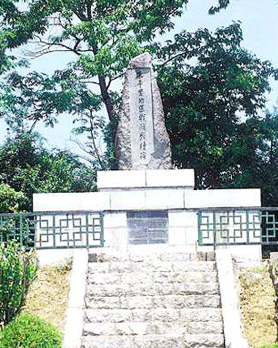
Monument for the Jipyong-ri Battle
In the Jipyong-ri fighting, French forces greatly contributed to deterring the Chinese February offensive. After the victory in this battle, UN forces were able to prepare for a counterattack, overcoming their fear of Chinese forces. The ROK 5th Division established this monument to commemorate French soldiers achievement and their sacrifice.
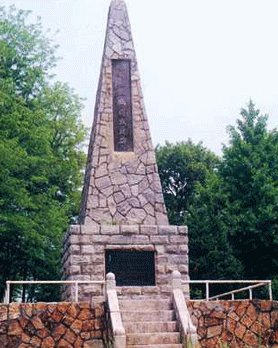
Monument for the Wonju Battles
During the period from January 1 to February 28, 1951, the ROK 5th, 6th and 8th Divisions, the US 2nd Division, the US 1st Marine Division the Netherlands Unit, and the French Battalion repelled the aggression of the CCF 37th Corps and the North Korean 5th Corps in the Wonju region, a strategically important place. This monument was built by the command of the 1st Corps on March 15, 1954, to commemorate their brave achievements, and to respect those who died.
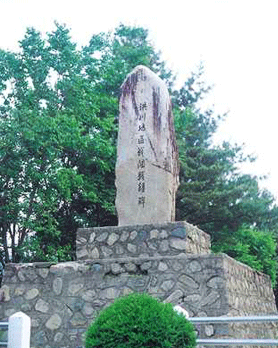
Monument for the Hongchon Region Combat
In the combat carried out in the Hongchon region from December 13, 1950 to May 20, 1951, the 3rd, 5th, and 8th Divisions of the ROK Army, the US 1st Marine Division, and soldiers of the Canadian and New Zealand Units successfully secured the middle front by repelling the 6th, 11th, 12th, and 45th Divisions of the North Korean Army and the 63rd Corps of CCF. This monument was built in order to commemorate this military achievement and to respect those soldiers who died during the combat.
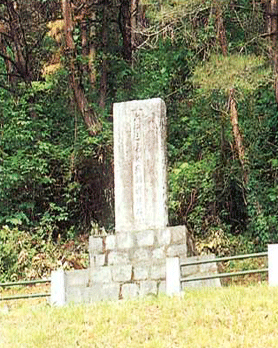
Monument for the Hill 643 Combat
During the Korean War, the ROK 6th Division and the US 17th Regiment repelled the Chinese 20th Corps, and captured the Hill 643 (Suri-Bong). This monument was built by the ROK Army 2nd Corps in order to commemorate their military achievement and to respect those soldiers who died during the combat.
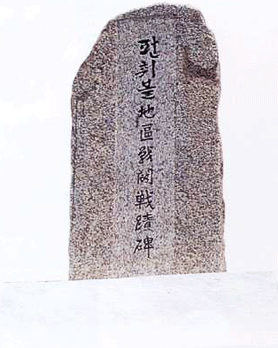
Monument for the Punchbowl region Combat
The US Marine 1st Division and the ROK Marine 1st Brigade, from August 29 to October 30, 1951, bravely fought with the enemy at Sohwa-ri, Kachilbong, the Bloody Ridge, Hill 1211, and the Hill Mumyong. In this battle, a number of US and ROK soldiers were sacrificed for freedom and peace. This monument was built by the ROK Army 3rd Corps in March 1958 in order to respect those soldiers who died during the combat.
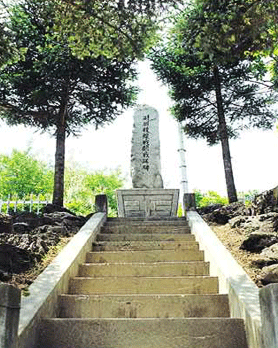
Monument for the Bloody Ridge Combat
During the Koran War, the 36th Regiment of the ROK 5th Division and the US 2nd Division captured the Bloody Ridge after offensive and defensive battle with the North Korean 12th and 27th Divisions from the 18th to the 22th August. This monument was built by the ROK Army 21st Division in November 1980 in order to commemorate their victory, and to respect those soldiers who died during the combat.
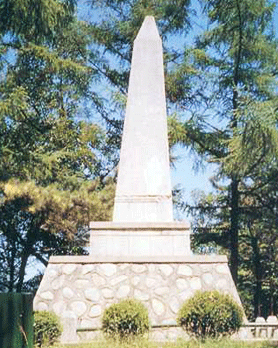
Monument for the Kapyong Region Combat
When the CCF broke through the ROK Army 6th Division at Sachang-ri, with their first Spring Offensive on April 1951, and widened their regions at this area, the US 9th Corp successfully secured Kapyong area and stopped CCF s offensive. This monument was built to commemorate this achievement.
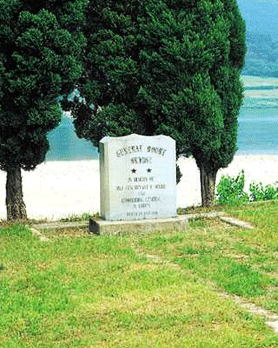
Monument to the Memory of General Bryant E.Moore
This monument was set up to memorialize General Moore who had deterred the enemy s aggression during the Korean War, and to consolidate the ties between the USA and the ROK.
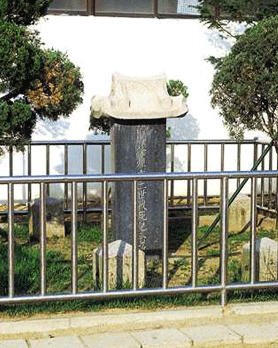
Monument to the Memory of Seo Wiryum Jr.
Seo Wiryum, Jr., a Korean-American, voluntary entered the US Navy. With the outbreak of the Korean War, he participated in the war as Lieutenant of the US Navy. He died at this spot at Nokbon-dong, Seoul, on September 22, 1950, while bravely taking the lead in the operation of recovering Seoul. This monument was established to honor his spirit of patriotism and sacrifice.
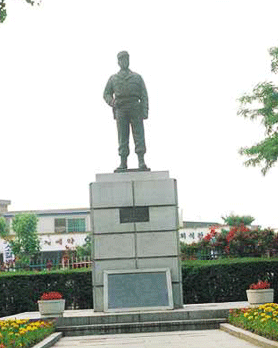
Statue of General John B, Coulter
General Coulter held the posts of the Commander of the US 9th Corps and the Vice-Commander of the 8th Army during the Korean War, He also contributed to the rehabilitation of South Korea as the Chief of the UN Korean Reconstruction Agency (UNKRA). In order to admire his achievements, his statue had been originally raised at Yongsan rotary on October 16, 1959. The statue was moved to its present location on September 7, 1977 due to the construction of the 3rd Namsan Tunnel.
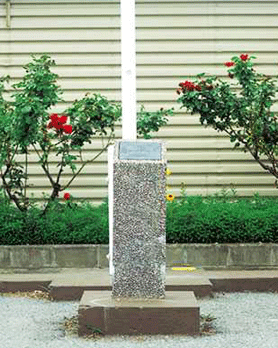
Monument to the Memory of Colonel Dean E.Hess
This monument was set up in January 1963 to the memory of Colonel Hess who had made over three sorties a day during the Korean War.
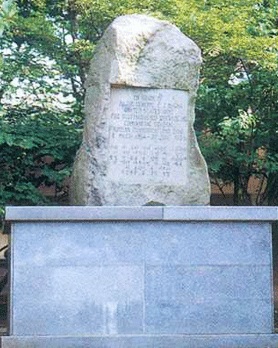
Monument to the Memory of Major General E. J. McGaw
Major General E. J. McGaw, the deputy commander of US Forces in Korea, was devoted to develop Korea and Koreans during the Korean War. This monument was built to honor in his memory and achievement by Daegu citizens.
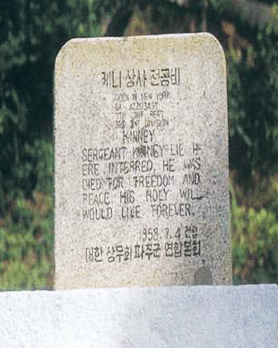
Monument to the Memory of Master Sergneant Oliver G. Klnney
During the retreat of January 4, 1951, in Dongmun-ri, US forces in a platoon size were at the risk of total defeat by enemy s tank attack. At that moment, Master Sergeant Kinney, with two followers, destroyed the tank with a suicide attack, rescuing the platoon. This monument was built to honor in his memory and achievement.
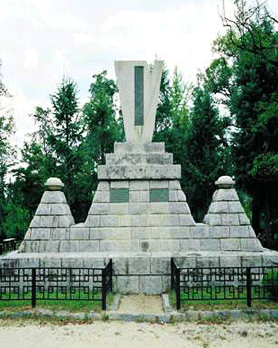
Monument to the Victory in Jinju Region Combat
On July 29, 1950, ounterattack Task Force Kean attached to the US 25th division defeated the North Korean 6th and 9th division in Jinju region. This monument was established to commemorate their victory in this combat.
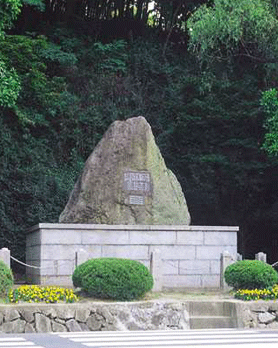
Monument to the Memory of the US Korean Military Adivisory Group
KMAG soldiers contributed to ROK Army development in various fields during the Korean War. This monument was established by Daegu citizens donations to honor their spirit of sacrifice in the Korean War.
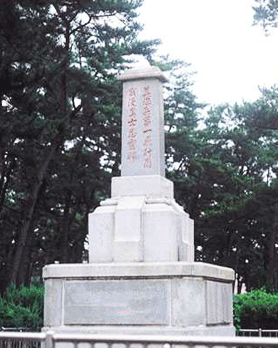
Monument to the Memory of the Soldiers of 1st Air Wing of the US Marine
Lee Jong-man, who had worked as a translator in the US Army during the Korean War, built this monument on December 22, 1952 in the Square of the Pohang Station to respect the soldiers of the US Marine and the 1st Air Wing who died in the Korean War. On April 22, 1969, the monument was moved to its current location at Songdo-dong.
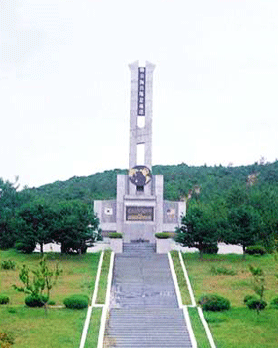
Monument to the Memory of the US and ROK Marines
This monument was built to respect the Marine soldiers who died during the US-ROK joint landing exercise. It is to consolidate ties between the US and the ROK, and serve as a reminder of the Korean War.
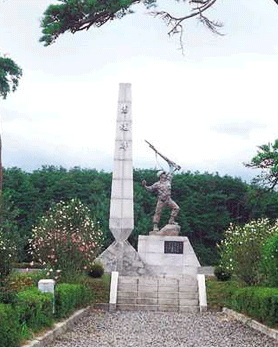
Monument to the Departed Spirit
From April 20, 1951 to July 27, 1953, the ROK 5th, 8th, 9th Divisions and the US 10th Corps engaged 16 times in fierces combats with the enemy around Mt. Konbong, finally regaining the Kojin region. This monument was set up in 1956 to commemorate the achievements of US and ROK forces, and to respect those soldiers who died in these battles. It was rebuilt in August 1988.
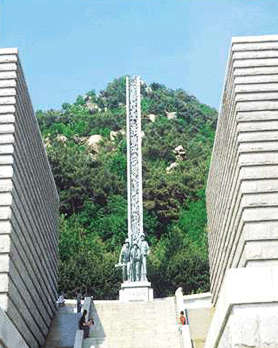
Memorial Hall for the Operation of Inchon Landing
On September 15, 1950, UN forces, led by General MacArthur, succeeded in landing on Wolmido, Inchon, which dramatically turned the war situation in favor of the UN. This Memorial Hall was established to commemorate the historic Operation of Inchon Landing.
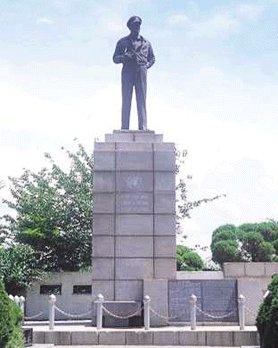
Statue of General Douglas MacArthur
When South Korea was at the risk of total defeat because North Korean forces had occupied the entire land except a part of Kyongsang-do, UN forces commanded by General MacArthur carried out the Operation of Inchon Landing. In order to commemorate General MacArthur, his statue was built in the Freedom Park which commands the view of the site of the Inchon landing.
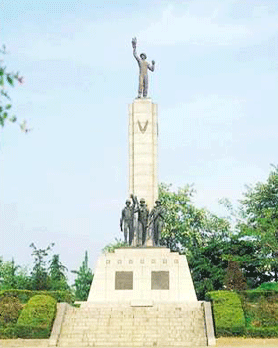
Monument for the Inchon Region Combat
This monument was built to respect UN and ROK soldiers who died in the Inchon region battle. It is to commemorate their achievements in combats including the Operation of Inchon Landing.
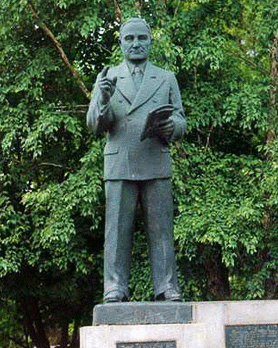
Statue of President Harry S. Truman
When South Korea had been attacked by the North Korean Communists on June 25, 1950, the USA President, Harry S. Truman, bravely decided to dispatch US forces for freedom and peace. This statue was built to admire him.
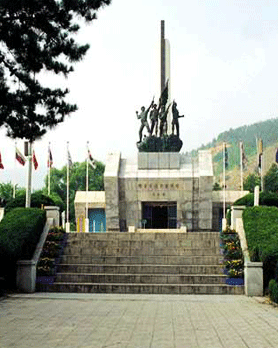
Memorial Hall for the Dabudong Combat
The UN forces maintained the Naktong River defense line, and defended Daegu along with gaining victory in the Dabudong Combat. This Memorial Hall was established to commemorate the victory in the Dabudong Combat.
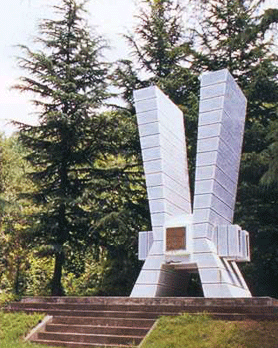
Monument for the Victory in the Dabudong Combat
When Dabudong area, which the ROK Army 1st division had defended, became dangerous with North Korean forces attack, the US 8th Corp committed their reserve, the US 27th Infantry Regiment on 25th Infantry Division to this area. The 27th Regiment defeated North Korean forces with Infantry/Armor Combined Armed Operations. They contribute to the defense of Daegu with supporting ROK Army 1st Division. This monument was built to commemorate this achievement.